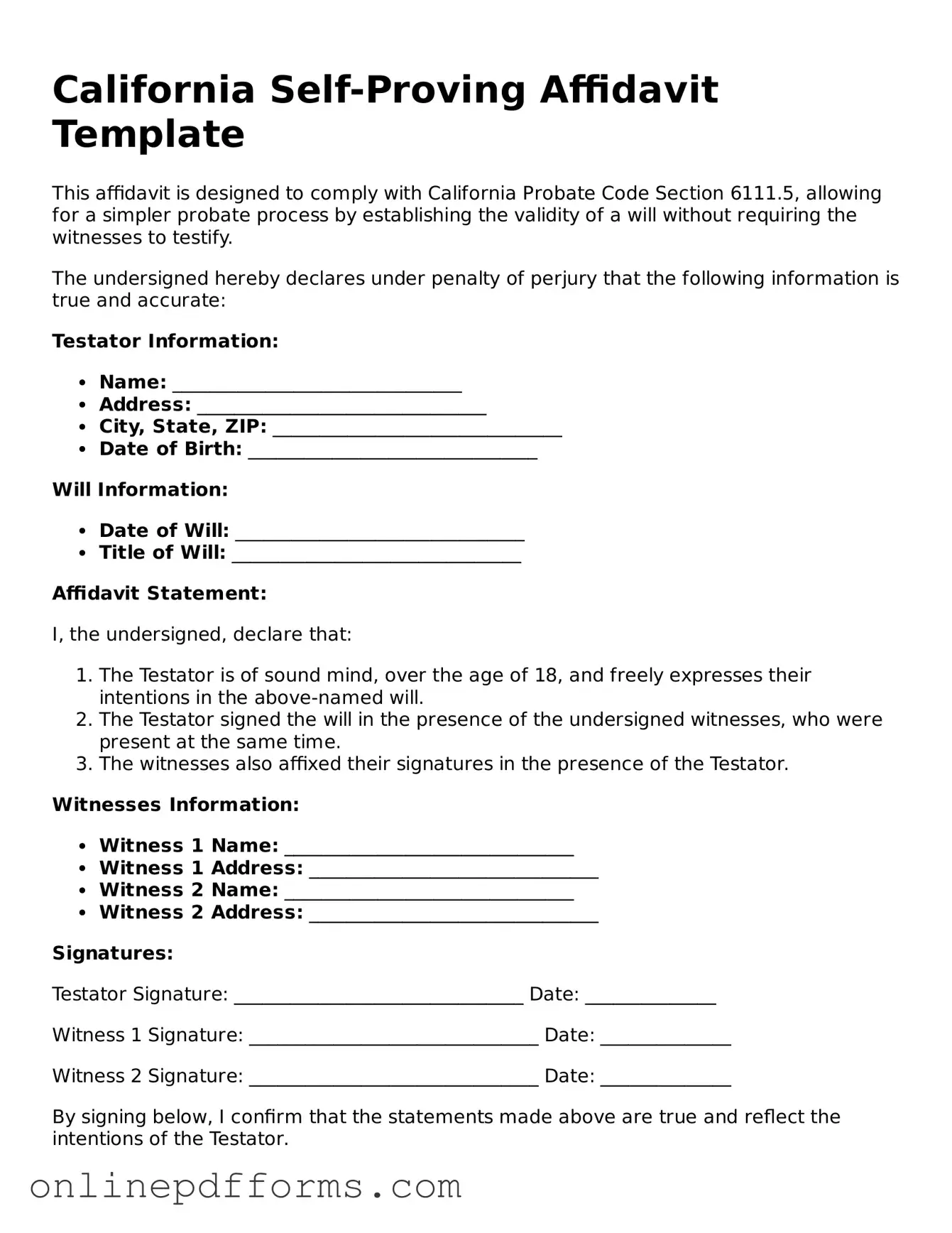Blank California Self-Proving Affidavit Form
A California Self-Proving Affidavit is a legal document that allows a testator's will to be validated without the need for witnesses to testify in court. This form streamlines the probate process by providing evidence that the will was properly executed. If you need to fill out this form, click the button below to get started.
Open Self-Proving Affidavit Editor Now
